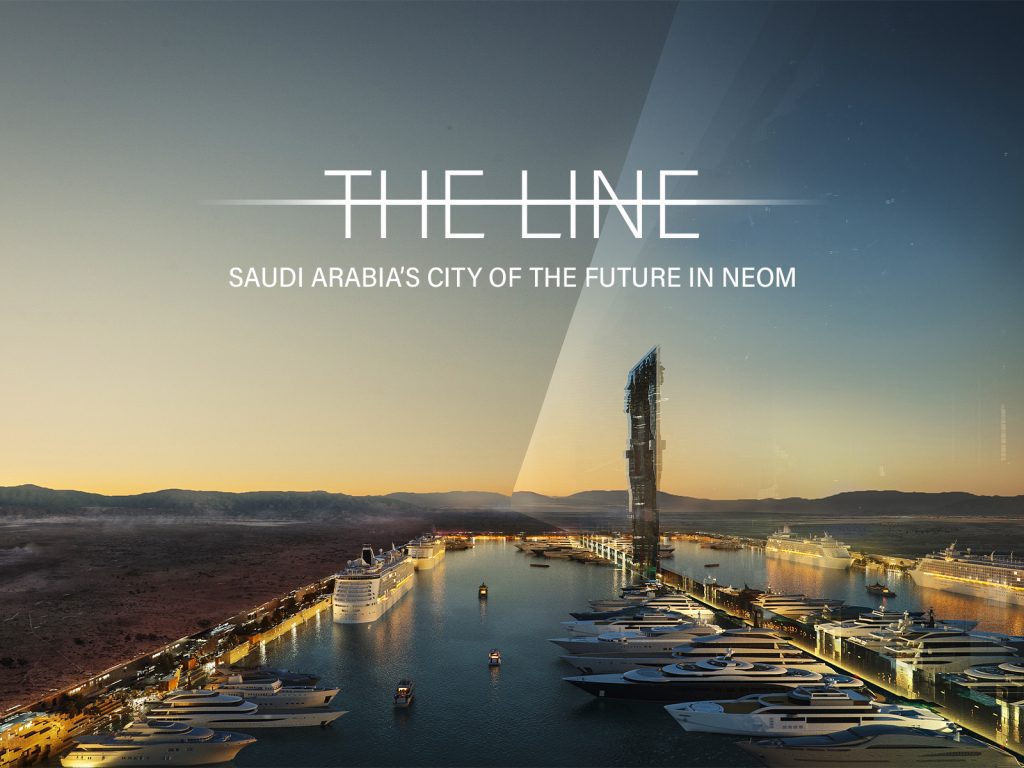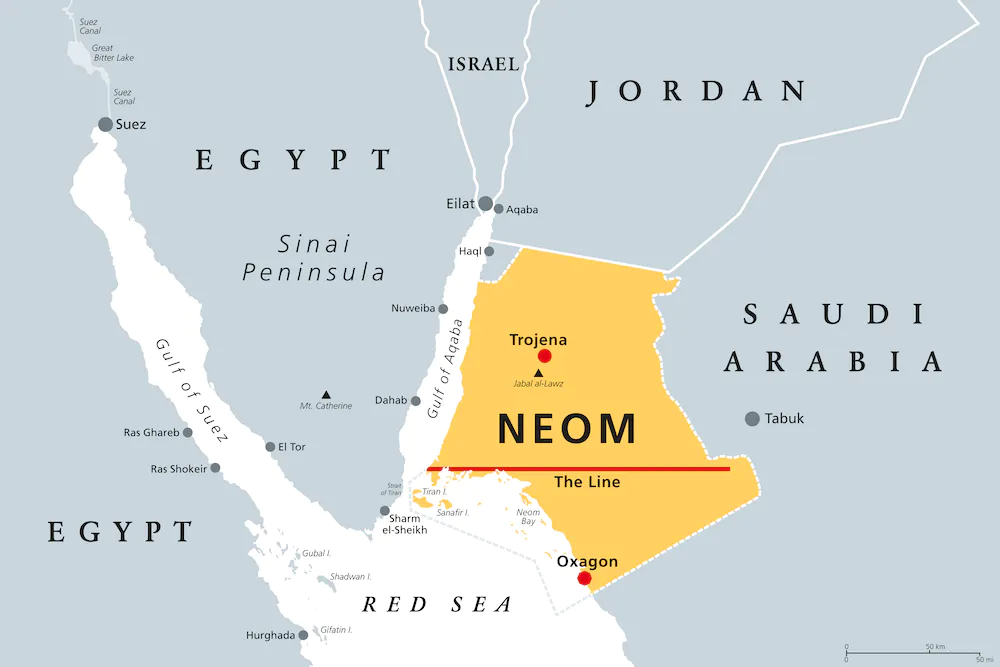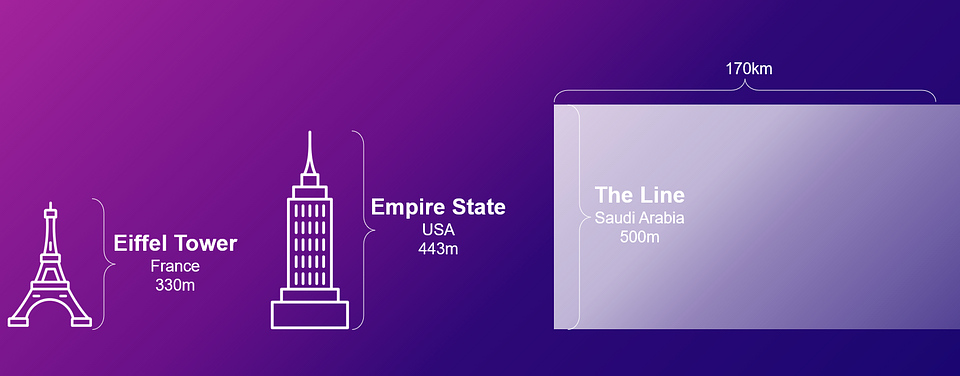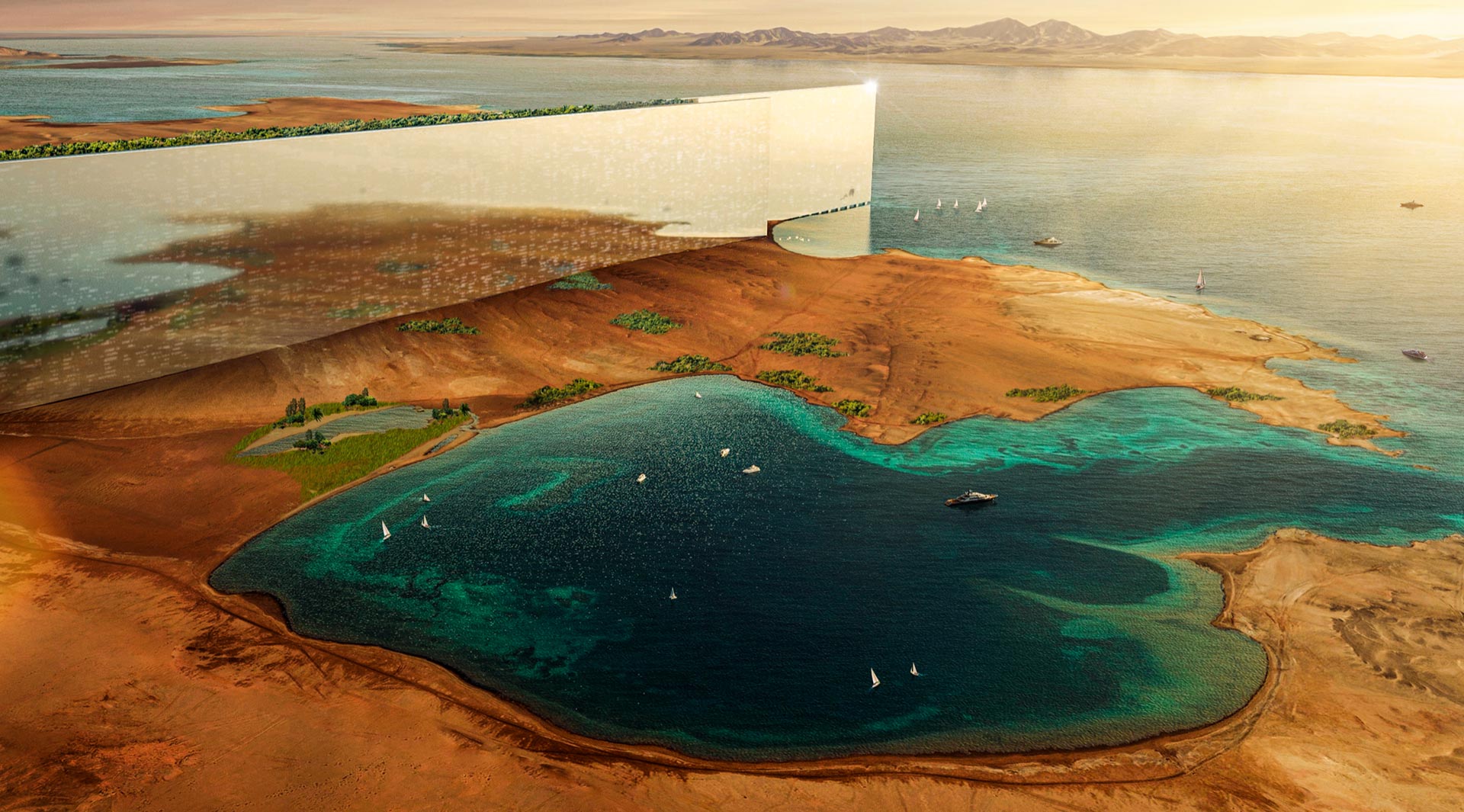
What some see as a perfect ecological metropolis, others see as a marketing ploy. Researchers from the Complexity Science Hub have now demonstrated why The Line should not be used as a model for future cities.The excavation work for the outstanding construction project in Saudi Arabia began in October.
“It’s the embodiment of the dream to start from scratch and completely rethink a city,” says Rafael Prieto-Curiel, a Complexity Science Hub researcher who studies cities. The Line is intended to be a desert metropolis constructed from scratch.
It will be made up of two massive, uninterrupted rows of towers, with residential space in between. It will be 170km long, 200m wide, and 500m tall, making it the tallest structure in Europe, Africa, and Latin America.

The density of The Line is going to be 10 times this of Manhattan
It is intended to house nine million people, more than any other metropolis in Saudi Arabia.
This amounts to a population density of 265,000 people per square kilometre. Ten times denser than Manhattan and four times denser than Manila’s inner districts, which are currently thought to be the densest urban regions on the planet.
“How you attract that many people in a medium-sized country is yet to be seen,” Prieto-Curiel observes.

A journey takes 60 minutes
In terms of mobility, further questions arise.
“A line is the least efficient possible shape of a city,” Prieto-Curiel explains. “There’s a reason why humanity has 50,000 cities, and all of them are somehow round.”
If we choose two persons at random from The Line, they will be 57 km apart on average. Two random persons in Johannesburg, which is 50 times greater in size, are just 33 km apart.
Assuming a one-kilometer walk, just 1.2% of the population is within walking distance of each other. This reduces active mobility, forcing individuals to rely on public transport.
A high-speed rail system is being designed as the backbone of public transit. “For everyone to be within walking distance of a station, there must be at least 86 stations,” says CSH researcher Dániel Kondor. As a result, trains spend a significant amount of time at stations and will not be able to move at high speeds between any two stops.
According to the experts, a trip will take an average of 60 minutes, and at least 47% of the population will have an even longer commute.
Gains are limited even with extra fast lines due to the increased transfers necessary. As a consequence, people would still drive for greater distances than in other big cities, such as Seoul, where 25 million people commute in less than 50 minutes.

A city is more than just a collection of neighbourhoods
People prefer to spend a minimal amount of time commuting, according to research, thus thriving communities require efficient transportation.
Can these journeys around the city, however, be avoided because high density makes everything (jobs, shopping, services, etc.) available locally?
“Cities are more than a collection of semi-isolated 15-minute neighbourhoods located next to each other,” says Kondor. “What sets a city apart from smaller settlements is not just its size but additional opportunities outside the immediate neighborhood such as concerts or an extended job search. For this reason, we need to consider citywide transportation.”
Why ”The Line”, but not ‘The Circle’?
If you take The Line and turn it into The Circle, with a radius of 3.3km, the distance between any two individuals is just 2.9km, and 24% of the population is within walking distance of one another.
The majority of movement might be active (walking, cycling, or similar), eliminating the need for a high-speed rail system.
Alternatively, The Circle might provide adequate connection even at lower densities, eliminating the requirement for supertall structures.
Positive thoughts on this still huge project
“This project gets people discussing urban forms, and that’s immensely important because cities, especially in Africa, are growing,” said Prieto-Curiel.
Historically, cities evolved organically, but planned cities frequently failed to meet expectations; thus, there is a need for increased public participation in human-scale urban planning.
Furthermore, several components of the project promote sustainability. For example, there will be no automobiles for distances of less than five minutes. This not only saves a lot of infrastructure and parking space, but it also decreases the number of automobiles on the road.
Moreover, all energy will be generated with zero carbon emissions. However, the construction of skyscrapers, which demands a lot of material and energy, is not included here.
“Overall, it stands to reason that other considerations may have played a role in choosing this unique form, such as branding or creating engaging social media videos. However, it is important to understand the consequences, especially if The Line is treated as a showcase for modern building and urban planning technologies,” says Prieto-Curiel.
